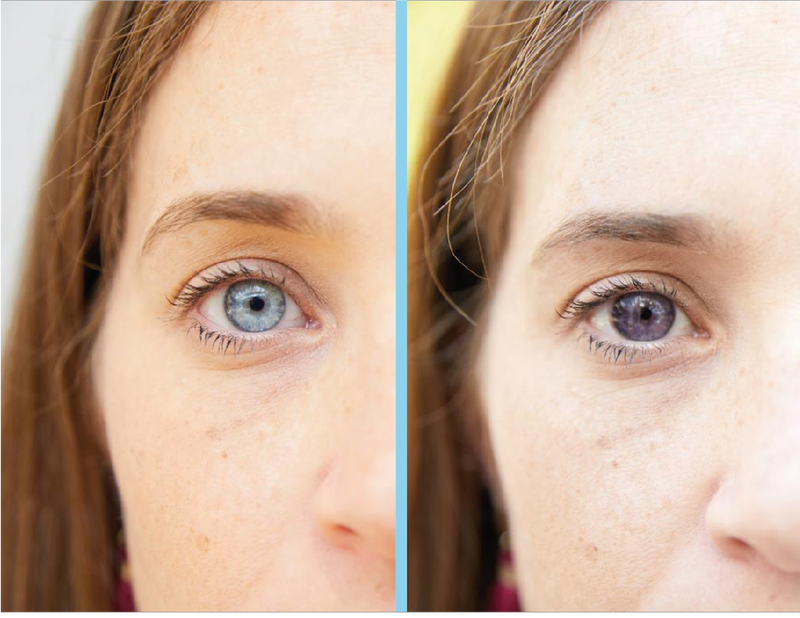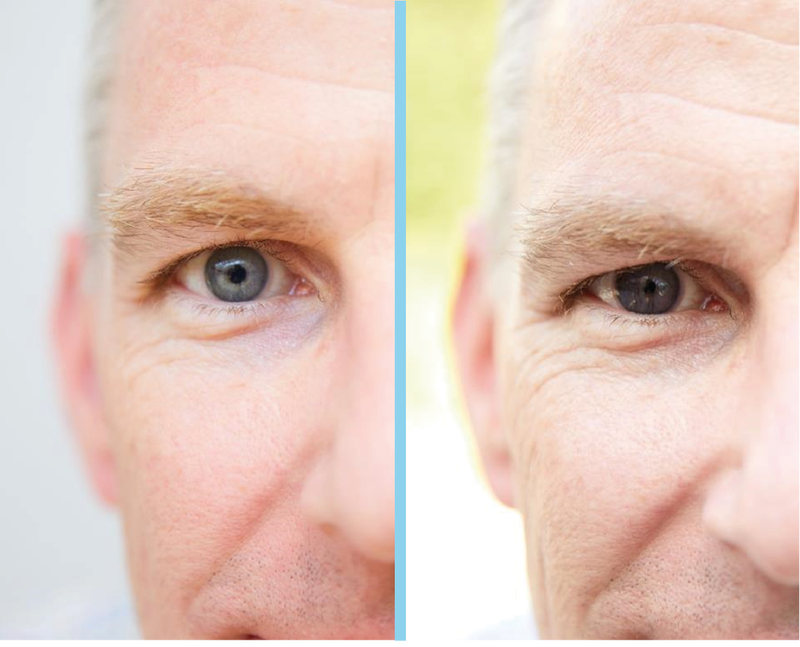Innovation
Eye on the prize: how contact lens technology is changing
With the launch of Johnson & Johnson Vision’s photochromic contact lens, the first to adapt to changing light conditions, Abi Millar looks at the growing field of contact lens technology, how it has developed over the years, and where the next breakthroughs may lie.

I
n April, Johnson & Johnson Vision announced the launch of its first-of-a-kind new contact lenses, ACUVUE OASYS with Transitions. The lenses feature a light intelligent technology, dispersed across the material in the form of trillions of photochromic molecules.
The lenses, which also provide vision correction, help the eyes adjust to darkness or brightness better than they would do on their own. While not intended as a replacement for sunglasses, they do lead to faster photostress recovery (vision recovery after exposure to bright light), less squinting and improved colour contrast.
“In the US, about two thirds of consumers indicate being bothered by bright or harsh lighting conditions daily,” says Dr Zohra Fadli, director of Sphere & Light Management at Johnson & Johnson Vision, who oversaw research and development. “This contact lens provides a dynamic photochromic filter that helps to continuously balance the amount of light entering the eye, helping the eye manage different types of light and varying intensities of brightness throughout the day.”
How the lenses work
According to survey data by Johnson & Johnson, around seven in ten Americans say they are bothered by light while driving, while 55% say their eyes feel stressed after experiencing harsh light. Half worry about how often they find themselves squinting, and 56% wish their eyes could adjust to different light conditions more rapidly.
The new lenses are designed to accomplish what eyes naturally cannot. Whereas a typical contact lens corrects a defect in vision, ACUVUE OASYS with Transitions goes beyond what a person with 20/20 vision could achieve.
“The contact lens quickly and seamlessly adjusts from clear to dark and back, reducing exposure to bright light indoors and outdoors,” says Fadli. “The lens is activated upon exposure to UV and High Energy Visible (HEV) light, also known as blue light. It darkens in under a minute – 45 seconds on average – and then quickly fades from dark to clear when going from outdoors to indoors. On average it appears clear on the eye within 90 seconds.”


The lens quickly fades from dark to clear when going from outdoors to indoors.
Images courtesy of Acuvue.
The research and development process, which took more than a decade, was not always straightforward. While Transitions Optical had already developed adaptive eyeglasses, the team faced three main challenges in adapting the technology for a contact lens.
The first challenge was how they could spread the photochromic molecules evenly throughout the material. ACUVUE OASYS contact lenses are made with Senofilicon A, a type of silicon hydrogel, which is obviously very different from glass.
The second was how to achieve the optimum concentration of molecules to deliver the visual benefit, while still looking good on the eye. In other words, the molecules needed to be strong enough to block out light, but without turning as dark as sunglasses and effectively changing the wearer’s eye-colour.
The third was how they could consistently manufacture the product to ensure commercial scale-up.
“Developing this specific contact lens was a labour of love for many within our organisations,” says Fadli. “It brought together a unique group of dedicated individuals from both Johnson & Johnson Vision and Transitions Optical Limited, who have spent the last decade creating and testing many different prototypes to come up with the most balanced visual outcomes for patients.”
Following numerous clinical trials, involving more than 1,000 patients, the lenses acquired 510(k) clearance from the FDA in April 2018, and were named one of TIME magazine’s best inventions of 2018.
“The contact lens was shown to reduce bright light by up to 32%, reduce squinting by 38%, help vision recover from bright light faster and improve colour contrast up to 38% to provide more vivid, more vibrant and more true vision experience,” says Fadli.
The history of contact lenses
Contact lenses have certainly come a long way since Leonardo Da Vinci first suggested the idea. His proposed contact lenses (which were never made) involved a water-filled glass hemisphere worn over the eye.
It wasn’t until a few centuries later that contact lenses became a viable proposition. The first successful lenses were designed in 1888, followed by the first plastic lenses in 1939. The next major innovation came in 1949, when lenses were scaled down to cover just the cornea (prior to that, they’d covered the whole eye).
In the US alone, more than 42% of people aged 12-54 have myopia.
Since then, lens technology has become progressively more sophisticated, with a number of advances in materials science. The first ‘soft’ (hydrogel) lenses were produced in the 1960s, followed by the first silicone hydrogel lenses in 1998. The latter combines the comfort of hydrogels with the oxygen-permeability of silicone, enabling the user to wear the lenses for longer stretches of time.
Today, there are many different types of lens on the market, ranging from standard corrective lenses, to cosmetic lenses to therapeutic lenses for treating eye conditions. Often, they are coated with anti-refractive and scratch-resistant materials to improve the wearer experience.
Overall, the market for contact lenses is large: in the US alone, more than 42% of people aged 12-54 have myopia (short-sightedness) while 5%-10% have hyperopia (long-sightedness). As of 2014, more than 40 million Americans wore contact lenses, and the global market is expected to grow 7.4% year on year between 2018 and 2026.
Future research directions
While most users don’t face any problems, a significant minority do experience eye infections (often due to poor compliance). As a result, many research teams today are focused on preventing contact lens contamination, particularly with regard to the pathogens that cause microbial keratitis.
One possibility might be to coat the lens in antimicrobial compounds; however, attempts so far have been stymied by negative side effects. Another approach might be a drug-eluting contact lens, which slowly releases nanoparticles that kill microorganisms. While research is in its early stages, recent studies have found this could be a promising strategy.
Drug-eluting contact lenses could also hold promise for a number of eye diseases. For instance, OcuMedic is looking to commercialise a therapeutic lens platform technology that could deliver different drugs directly to the eye. The lens could be worn by patients who have undergone cataract or LASIK surgery, reducing recovery time and postoperative complications, and might also be used for patients with dry eye and glaucoma.
“The current therapeutic eye drops market is $16bn annually. A successful drug-eluting, soft contact lens – that could potentially capture a large part of that market – is expected to garner significant interest from large pharma companies,” said Keith Ignotz, president and CEO of OcuMedic.
The current therapeutic eye drops market is $16bn annually.
Johnson & Johnson Vision is currently working on antihistamine-eluting lenses, designed to reduce eye itching and redness after exposure to allergens. The lenses successfully cleared phase 3 trials in March and are moving towards a regulatory submission.
“Johnson & Johnson Vision has several products in development that will expand the range of benefits we are able to offer patients, consistent with our future-forward approach to caring for human sight,” says Fadli.
Another key area of research is macular degeneration, or age-related loss of central vision. Existing contact lenses cannot help here, since they correct the eye’s focus but don’t make any difference to retinal damage. A Swiss team of researchers are looking to redress this problem with a ‘telescopic’ lens that allows the user to switch between normal and magnified vision. (Intriguingly, this technology could also have battlefield applications.)
While contact lens technology has come a long way over the years, it remains a fertile area of research with many possible areas of improvement in future. Tomorrow’s lenses may be not just comfortable, but infection-resistant, and better tailored towards specific eye conditions.
“We expect continued innovation to address a variety of unmet needs,” Fadli explains.